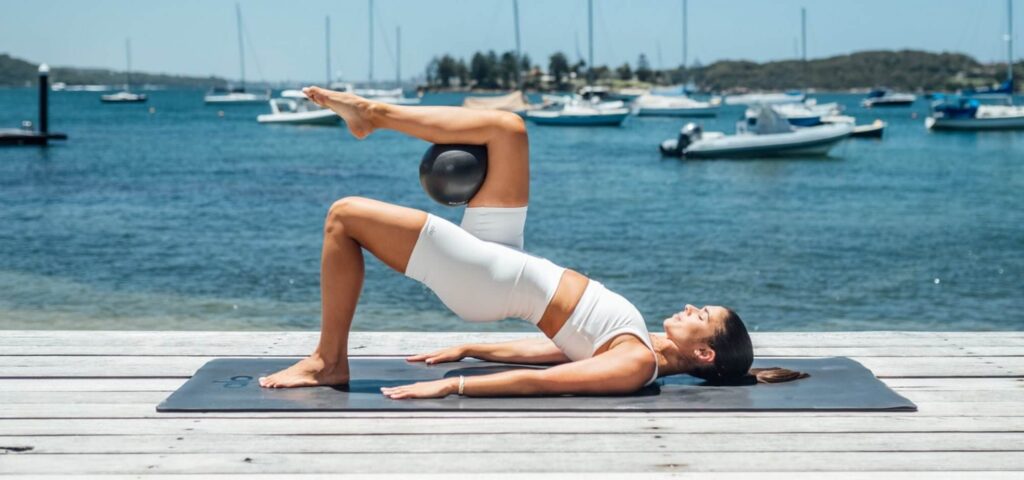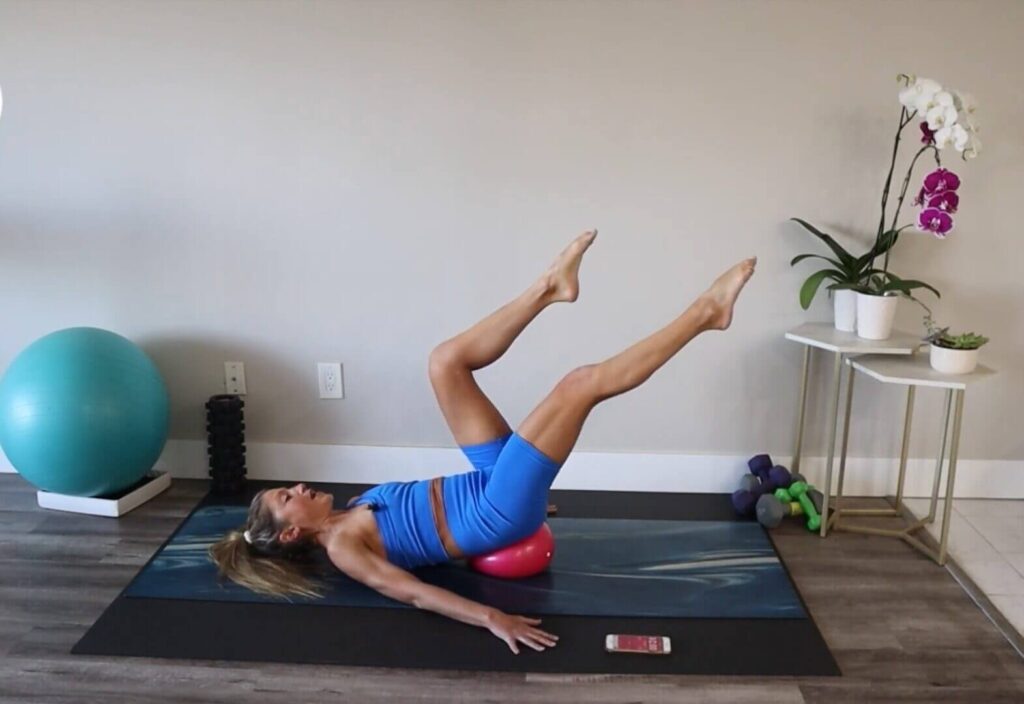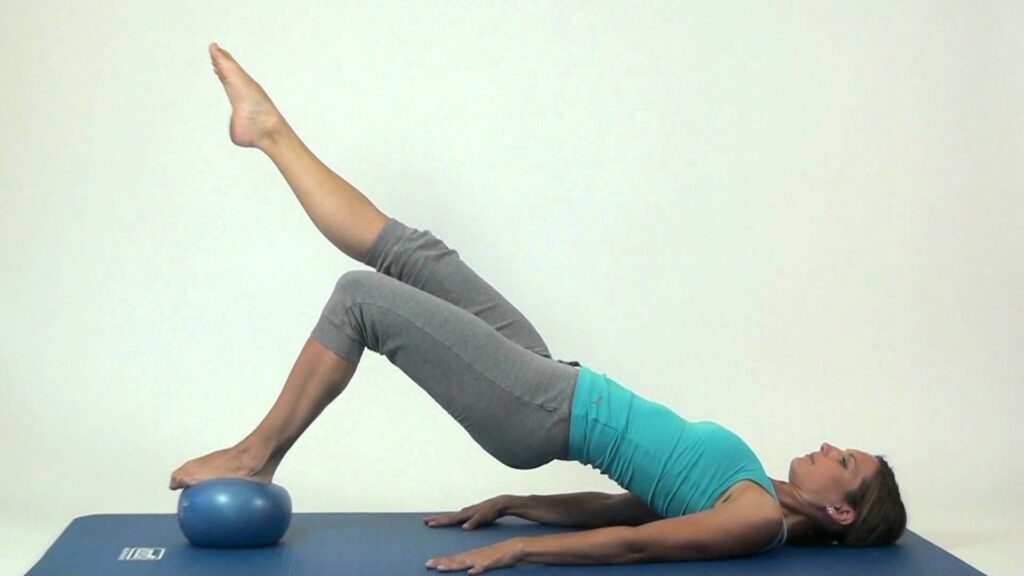Pilates has gained immense popularity as a form of exercise that promotes strength, flexibility, and overall well-being. One of the latest trends within this discipline is the use of small Pilates balls, which can enhance traditional Pilates exercises and provide additional benefits. In this article, we will explore the advantages of incorporating small Pilates ball exercises into your routine, how to get started, and a variety of exercises to improve both strength and flexibility.
Understanding the benefits of small Pilates ball exercises
Utilising a small Pilates ball can significantly enhance your workout experience by providing support, guidance, and an added challenge. These exercises not only engage your core but also promote better balance and coordination.
Some of the primary benefits include:
- Improved muscle engagement: The instability created by the ball encourages more muscle fibres to participate, leading to enhanced strength.
- Increased range of motion: The ball can help facilitate stretching beyond your regular limits, thereby improving flexibility.
- Rehabilitation support: For those recovering from injuries, using a small ball can assist in gentle rehabilitation while maintaining strength.

Enhancing strength with small Pilates ball exercises
Small Pilates ball exercises focus on utilising the body’s own weight and the added challenge of the ball to boost strength across various muscle groups. By incorporating the ball into traditional movements, you can enhance your core stability, making your muscles work harder.
Exercises like wall squats with a Pilates ball or a lying chest press can strengthen major muscle groups effectively. These movements not only target the muscles but also improve posture as they engage stabilising muscles in the body. Furthermore, the use of the ball can transform mundane exercises into dynamic movements, keeping your workout routine fresh and engaging. This variety not only helps in maintaining motivation but also ensures that different muscle groups are activated, leading to a more balanced physique. Learn more how to use a Pilates ball for full-body workouts.
Boosting flexibility through small Pilates ball exercises
Flexibility is a crucial component of fitness, and small Pilates ball exercises play a significant role in developing it. The ball can be used to assist in stretches that target various parts of the body, ultimately leading to improved overall flexibility and mobility.
For example, placing the ball under your lower back during a spinal stretch allows for a deeper stretch without straining the muscles. Additionally, this method fosters relaxation, which is essential for effective stretching. The gentle support of the ball also enables you to hold stretches for longer periods, which can further enhance flexibility over time. As you progress, you may find that your ability to perform everyday activities improves, as increased flexibility often translates to a greater range of motion in daily movements. Incorporating the small Pilates ball into your routine not only aids in physical development but also contributes to a sense of well-being and mindfulness during your practice.
Getting started with small Pilates ball exercises
Before diving into specific exercises, it’s essential to know how to prepare for a small Pilates ball workout. Having the right equipment and understanding your own body’s capabilities will set the groundwork for a successful exercise session.
Choosing the right Pilates ball for you
Selecting the appropriate size of Pilates ball is foundational to your comfort and effectiveness during workouts. Generally, a ball should be inflated to your height specifications: if you are under 1.52 m, a 25 cm ball is ideal; 1.52 m – 1.75 m should use a 30 cm ball; and those taller than 1.75 m can utilise a 35 cm ball.
Make sure the ball is durable and designed for Pilates exercises. Check for any defects before use to ensure safety during workouts. It’s also wise to consider the material of the ball; anti-burst balls are particularly recommended as they provide an added layer of safety, ensuring that if the ball does puncture, it will deflate slowly rather than suddenly, which could lead to falls or injuries.

Preparing for your Pilates ball workout
Prior to beginning your exercises, ensure you have a safe and comfortable space to work out in. A flat surface, such as a yoga mat, provides ample grip and cushioning. Additionally, wear comfortable clothing that allows for full range of motion.
It’s often useful to start with a warm-up to prevent injury. Simple stretches or light aerobic movements can be beneficial. This helps to prepare your muscles and joints for the upcoming exercises, enhancing overall performance. Incorporating dynamic stretches, such as arm circles or leg swings, can further increase blood flow to your muscles, making them more pliable and ready for the workout ahead. Furthermore, consider integrating some deep breathing exercises into your warm-up routine; this not only calms the mind but also improves oxygen flow, which is crucial for optimal performance during your Pilates session.
Detailed guide to small Pilates ball exercises
Once you have prepared, it’s time to explore specific small Pilates ball exercises that target various regions of your body. Below are tailored routines to enhance strength and flexibility.
Exercises for improving upper body strength
To strengthen your upper body, consider the following exercises:
- Ball Push-Ups: Place your hands on the ball while keeping your feet grounded. Lower your body into a push-up as you maintain balance.
- Overhead Press: Sit on the floor with the ball positioned behind your lower back. Grab weights and lift them overhead while stabilising your core.
These movements not only work the arms and shoulders but also engage the core, leading to an effective workout. Incorporating the small Pilates ball into your routine adds an element of instability, which forces your muscles to work harder to maintain balance. This not only increases the intensity of the exercises but also improves proprioception, which is the awareness of your body’s position in space. As you progress, consider increasing the weight or the number of repetitions to continue challenging your upper body strength.
Exercises for enhancing lower body flexibility
The following exercises help to enhance flexibility in the lower body:
- Hamstring Stretch: While sitting, place the ball between your legs. Lean forward gently to feel the stretch in your hamstrings.
- Hip Openers: Lying on your back with the ball under your knees, gently allow your knees to fall out to the side, promoting hip flexibility.
These targeted stretches can yield significant improvements in leg flexibility while assisting in overall lower body conditioning. Flexibility in the hamstrings and hips is crucial for maintaining proper posture and preventing injuries, especially for those who spend long hours sitting. Regularly incorporating these stretches can enhance your range of motion, making everyday movements easier and more fluid. Additionally, you may find that improved flexibility can lead to better performance in other physical activities, such as running or cycling.
Full-body exercises for overall fitness
For those seeking full-body engagement, consider these routines:
- Ball Roll-Out: Start in a kneeling position with one hand on the ball. Roll the ball forward as you stretch out your body, thereby engaging both the core and the arms.
- Squat with a Twist: Hold the ball at chest level, squat down, then twist your torso to each side as you rise to target the obliques.
These full-body movements promote strength and coordination, making them an excellent addition to your workout repertoire. Engaging multiple muscle groups simultaneously not only saves time but also boosts your metabolism, making your workout more efficient. Furthermore, the dynamic nature of these exercises encourages better cardiovascular health by elevating your heart rate. As you become more proficient, consider increasing the duration of each exercise or incorporating variations to keep your routine fresh and challenging.

Maintaining proper form and safety during workouts
While exercising, it’s crucial to maintain proper form and be mindful of safety. Adopting the correct posture can prevent injuries and ensure maximum efficiency during workouts.
Tips for maintaining correct posture
When performing small Pilates ball exercises, ensure that your posture remains correct. This includes:
- Keeping shoulders relaxed and away from your ears.
- Engaging your core to maintain stability.
- Aligning your spine and ensuring your head is over your pelvis.
Additionally, focusing on breathing can further enhance your workouts—inhale during preparation and exhale as you exert strength. Proper breathing techniques not only improve oxygen flow to your muscles but also help in maintaining a rhythm that can boost your overall performance. As you become more attuned to your breath, you may find that it aids in centring your mind, allowing for a more focused and effective session.
Avoiding common Pilates ball exercise mistakes
To maximise the effectiveness of your workouts, it’s essential to be aware of potential mistakes that can hinder progress or lead to injury. Some common errors include:
- Forcing stretches beyond your limits, which can result in strains.
- Using a ball that is too small or too large for your body type.
- Failing to engage the core, thereby putting unnecessary strain on the lower back.
Moreover, it’s important to regularly assess your equipment and environment. Ensure that your Pilates ball is properly inflated and free from any punctures, as a deflated ball can lead to instability and increase the risk of falls. Additionally, consider the surface on which you are exercising; a non-slip mat can provide extra grip and support, allowing you to focus solely on your movements without the distraction of slipping or sliding. By being attentive to your form and recognising these pitfalls, you can ensure a safe and effective Pilates experience.
Incorporating small Pilates ball exercises into your routine
Once you understand the various exercises and their benefits, the next step is to incorporate them into your fitness regimen. This can create a well-rounded workout schedule that enhances both strength and flexibility.
Creating a balanced workout schedule
Designing a workout schedule that includes small Pilates ball exercises ensures a balanced approach to fitness. Aim for at least two to three sessions per week, allowing time for recovery. Each session can focus on different areas, such as upper body one day and lower body the next, ensuring you get comprehensive training.
Additionally, mixing Pilates ball exercises with other forms of activities, such as cardio or strength training, can keep your regimen engaging while promoting overall fitness.
Adapting exercises to your fitness level
It’s essential to listen to your body and adapt exercises according to your fitness level. Beginners should focus on mastering basic movements before progressing to more demanding routines.
Consider starting with lighter weights and fewer repetitions, gradually increasing them as your strength and confidence grow. Always prioritise form over quantity to maximise the benefits of your Pilates ball workouts.
In conclusion, small Pilates ball exercises offer an exciting and effective way to enhance your strength and flexibility. By understanding their benefits, preparing appropriately, and incorporating a variety of exercises into your routine, you can unlock a new dimension of fitness that contributes to overall well-being.
